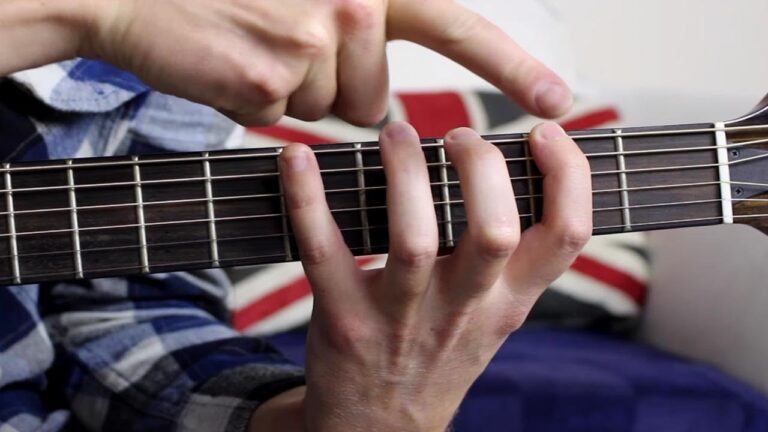Learning to play the guitar is an exciting journey, but nothing can be more frustrating than a guitar that’s out of tune. You might think that a tuner is essential, but tuning a guitar without a tuner is not only possible—it’s a skill every guitarist should master. Whether you’re at a campfire with friends, in a practice session, or simply without access to a tuner, knowing how to tune by ear is invaluable. In this guide, we’ll walk you through step by step on how to tune your guitar without a tuner, ensuring you get the best sound every time.
Why Learn to Tune a Guitar Without a Tuner?
Before diving into the techniques, let’s address why this skill is so crucial. First, it sharpens your ear, which is fundamental to becoming a better musician. When you rely solely on a tuner, you miss out on developing the auditory skills necessary to recognize when a string is out of pitch. Moreover, understanding how to tune a guitar without a tuner allows you to play anytime, anywhere, without needing a gadget.
The Basics: Understanding Standard Tuning
Before we get to the nitty-gritty, it’s important to understand standard tuning. A guitar is typically tuned to E-A-D-G-B-E, from the lowest (6th) string to the highest (1st) string. Remembering this sequence is the first step in tuning by ear.
Method 1: Tuning Using the Fifth Fret Method
The fifth fret method is one of the most common and reliable ways to tune your guitar without a tuner.
- Start with the Low E String (6th String): Begin by tuning the low E string as close to correct as possible. You can use a reference pitch, such as another instrument or a pitch pipe, if available. If not, use your best judgment to find the correct pitch.
- Tune the A String (5th String): Press down the 6th string at the 5th fret, which should produce an A note. Now, play the open 5th string and adjust it until it matches the pitch of the 6th string at the 5th fret.
- Tune the D String (4th String): Once the A string is in tune, press down the 5th string at the 5th fret to get a D note. Tune the open 4th string to match this pitch.
- Tune the G String (3rd String): Press the 4th string at the 5th fret to produce a G note, and tune the open 3rd string to match.
- Tune the B String (2nd String): This step is slightly different. Press the 3rd string at the 4th fret (not the 5th) to produce a B note. Match the open 2nd string to this pitch.
- Tune the High E String (1st String): Finally, press the 2nd string at the 5th fret to produce an E note and tune the open 1st string to match.
This method will get your guitar in tune relative to itself, which is usually sufficient for most playing situations.
Method 2: Tuning Using Harmonics
Harmonics are another excellent way to tune your guitar without a tuner, especially if you’re looking for precision.
- Harmonics on the 5th and 7th Frets: To start, lightly place your finger over the 5th fret of the low E string and pluck the string to produce a harmonic (a bell-like tone). Do the same on the 7th fret of the A string. The two harmonics should sound the same. Adjust the A string until they match perfectly.
- Continue Across the Strings: Repeat this process for the D and G strings (5th fret harmonic on the A string and 7th fret harmonic on the D string, and so on).
- Tuning the B String: The B string is tuned differently. To tune it using harmonics, play the harmonic on the 7th fret of the low E string and match it with the harmonic on the 12th fret of the B string.
- Final Adjustments: After tuning all the strings, play a few chords to check if they sound in tune. Fine-tune as needed.
Method 3: Tuning Using a Piano or Another Instrument
If you have access to a piano or another tuned instrument, you can tune your guitar to match the corresponding notes.
- Find the Notes on the Piano: The notes on the piano that correspond to the guitar strings are: E (above middle C) for the 6th string, A for the 5th string, D for the 4th string, G for the 3rd string, B for the 2nd string, and E (two octaves above middle C) for the 1st string.
- Tune Each String: Play the note on the piano and tune each string to match the pitch.
This method is especially helpful if you’re tuning an acoustic guitar without a tuner, as the sound from the piano will be more resonant.
Troubleshooting Common Issues
Even with these methods, you might encounter some common issues:
- String Stretching: New strings tend to go out of tune quickly because they stretch. Make sure to stretch your strings by gently pulling them away from the fretboard and retuning as necessary.
- Temperature and Humidity: Changes in temperature and humidity can affect your guitar’s tuning. If you notice that your guitar goes out of tune frequently, consider storing it in a controlled environment.
- Intonation Problems: If your guitar is still out of tune after using these methods, it might be an intonation issue. In this case, you might need to adjust the guitar’s bridge or see a professional for a setup.
Conclusion
Tuning a guitar without a tuner is an essential skill for any guitarist, whether you’re just starting out or have been playing for years. By mastering the fifth fret method, harmonics, and tuning with a piano or another instrument, you’ll be able to keep your guitar in tune no matter where you are. This not only enhances your playing experience but also improves your overall musicianship. Remember, the key to success is practice. The more you tune by ear, the better you’ll get at it. So, pick up your guitar and start practicing today!








Leave a Comment